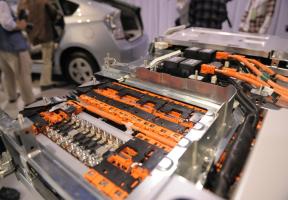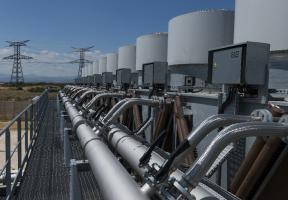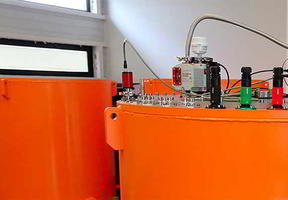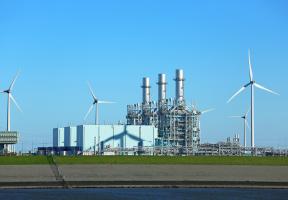Sustainable Energy Challenges: The Electric Car
Updated on 06.16.20235 min read
Energy use must satisfy a set of conditions to be considered “sustainable”: it must not exhaust natural resources, it must not emit too much CO2 or other pollutants and, most importantly, it must form part of a virtuous “cycle” at every stage. Take, for example, electric and cars, which are set to play a key role in the future of mobility.

© getty/kevinjeon00
A common mistake is to judge a vehicle’s environmental performance when it is in use, without considering what happens “before” (how it was made and where its comes from) or “after” (whether it can be recycled).
All-Electric Vehicles
All-electric vehicles are powered by an electric motor – as opposed to an internal combustion engine – and by a battery that is much bigger than the one used in a traditional car. This battery stores supplied by the public grid.
Here are a few phases in the “life cycle” of an electric car.
Engine and cabin production – This requires metals (iron, copper, etc.) and petroleum-based plastics, without which the car would be much heavier and would therefore consume more energy. But the process is virtually the same as for a traditional car.
Battery production – The battery in a Renault Zoé supermini weighs 326 kilograms. In the larger Tesla Model S sedan, which has a range in excess of 500 kilometers, the battery weighs a colossal 600 kilograms. The most widely used technology today is the lithium-ion battery, which is made from lithium (mined in Latin America), cobalt, nickel (found in Africa) and other metals that have now become strategic. All of these minerals have to be extracted and processed into usable materials. Note that “rare earths” (cerium, lanthanum, neodymium, etc.), of which China has major reserves, are used less and less in electric cars, except in small motors to power the air conditioning or to open and close the windows and doors.
Vehicle use – An electric car is only “clean” if the electricity of the country in which it is used is generated without emitting large quantities of greenhouse gases. France uses 70% nuclear power, which produces very little carbon. The situation is very different in Germany, where and natural gas make up a very large share of the power generation mix. Electrical power transmission is not a problem in industrialized countries, because their networks are highly developed. The same cannot be said of developing regions, notably Africa, where electrification remains low.
One major point on the side of “sustainability” is the absence of exhaust fumes (although there is still brake dust).
Vehicle end-of-life – The end of a vehicle’s useful life offers the very interesting possibility of reusing the batteries for stationary applications, for example in buildings or to store surplus electricity generated by a wind turbine. When a car battery has lost 20% of its capacity, it is no longer suitable for the demanding performance requirements of a vehicle. But it can still handle regular charging and discharging for stationary uses. This “second life” can last several years.
Verdict
Based on a lifespan of roughly ten years, it is estimated that an electric car emits an average of two to three times less greenhouse gas than a gasoline or vehicle1. But the figures vary widely depending on the country, vehicle usage practices (proportion of high-powered cars, car-sharing, city driving, etc.) and government mobility policies.
Hydrogen Vehicles
Hydrogen cars also run on an electric motor. But instead of recharging from the public grid, they produce their own electricity from a hydrogen . They have a battery too (but much smaller than those found in all-electric vehicles), and a tank that contains high-pressure hydrogen gas.
Compared with an all-electric car, there are two key issues to consider when assessing the life cycle of a hydrogen car:
- Is the hydrogen used “clean”? Today, 95% of hydrogen is derived from hydrocarbons (oil, natural gas and coal). Ideally, it would be produced using renewable electricity (wind, solar) via electrolysis. While this is technically possible, it would require the creation of a new electrolyzer industry.
- How is the hydrogen transported to the car? Although the power grid extends to every corner of most developed countries, and natural gas is widely distributed too, there is no such network for hydrogen.
Verdict
According to a report by the French Environment and Energy Management Agency (ADEME), producing hydrogen from fossil fuels results in a nine times greater than for “green” hydrogen. And when transporting green hydrogen to a fueling station, CO2 emissions increase threefold every 100 kilometers.
Sources:
- Report by the European Climate Foundation, the Nicolas Hulot Foundation, ADEME and various industry bodies – See summary (in French)



















